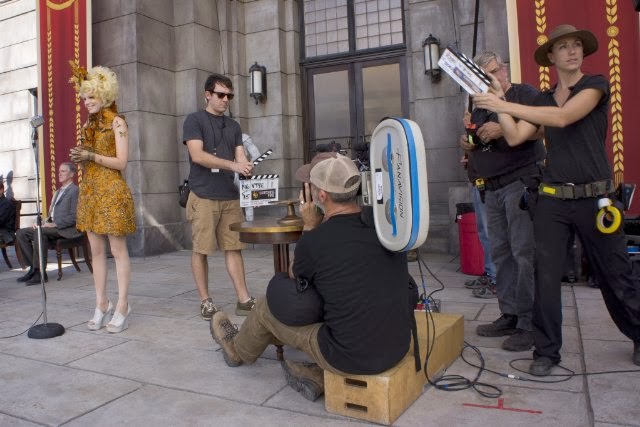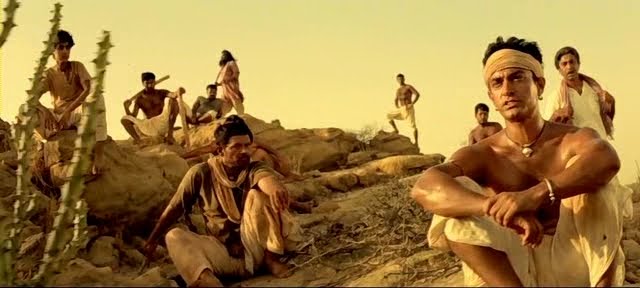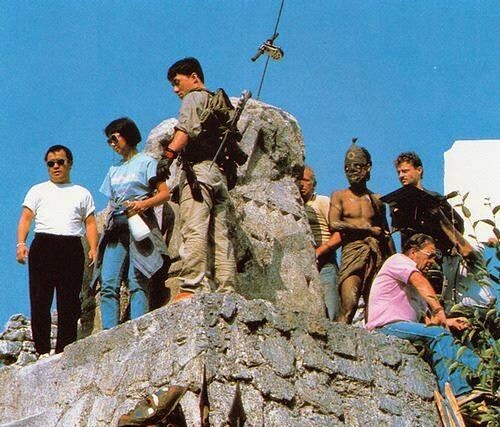How Does Behind-the-Scenes Film Production Compare to the Glamour of “Movie Magic”?
Quick Answer: With its larger than life action sequences, melodramatic performances and luxurious settings, some films are filled with glamour. But how much does the filmmaking process reflect that luxuriant lifestyle? As it turns out, not much. The process of shooting can be taxing and discouraging, resulting in a demoralized, sleep-deprived cast and crew.
Watching larger-than-life action sequences, melodramatic performaces and luxurious settings, we imagine life on set as a world of glamour far superior to humdrum everyday life. But how close is this fantasy to real behind-the-scenes experiences? As the documentary Chale Chalo: The Lunacy of Film Making (2003) pionts out, most of the time, the fantasy and behind-the-scenes couldn’t be farther apart. Here are just a few facets of film production that demonstrate the gritty, grueling underbelly of “movie magic.”
The Set-Up
A film has a long road before it even gets to production, and this road is full of paperwork, fundraising, scheduling, disappointments and uncertainty. Every film begins with one idea. Fleshing this idea into a script can easily take a year, if not several years, and the bigger the film, the more people are involved in developing the script, much to many screenwriters’ chagrin. Then comes the logistics, the producer’s arena. Partners and investors are acquired; a cast and film crew are hired; the all-important production schedule and budget are planned out; locations are scouted; necessary equipment is obtained; and production facilities and sets are secured. All of these laborious, often tedious nuts-and-bolts of development and pre-production must happen prior to principal photography. In independent film, financiers often drop out at any stage in the process, leading to many setbacks and time delays that mean pre-production can span years.

On the set of The Hunger Gamer: Catching Fire (2013)
Extreme Locations
Despite the logistical and budgetary nightmares that ensue during pre-production, the production itself is often seen as the most strenuous and physically taxing stage in creating a film. In most movies there are at least a few scenes that need to be filmed on location. Shifting the entire unit to an outdoor location can seem a Herculean task. In addition to supplying the basic necessities like power and food, the production must also pre-assign a filming schedule and (more or less) stick to it. Not doing so can overwork and embitter the cast and crew, not to mention rack up shooting costs. But locations introduce unknown variables, especially if a film does not have the budget to close off the location.
Certain locations can also be unforgiving, whether it is an unbearably hot desert or torrential downpours. Even the slightest changes in weather can stall shooting. The most important premise of the Bollywood movie Lagaan: Once Ppon a Time in India (2001) was the arid setting of a village facing a drought. Hence, shooting was stalled whenever the sky was unexpectedly cloudy. There were days when not a single scene could be shot and a possibility of the extension of the schedule began looming over the production team. In instances like this, when the duration of an on-site location shooting schedule is prolonged, the cast and crew can become emotionally drained.
The Oscar-winning The Revenant (2015), portraying the hardships faced by a 19th-century explorer for his survival, demanded rigorous shooting in the extreme weather conditions. Shooting at 40 degrees below zero meant even the equipment was not able to withstand the temperature, and the entire team was battling hypothermia. “Everybody was frozen, the equipment was breaking; to get the camera from one place to another was a nightmare,” director Alejandro González Iñárritu told Hollywood Reporter.

Lagaan: Once upon a time in India (2001)
Physical Challenges
Enduring the challenges of working outdoors can take a toll on the entire cast and crew. The team must work long hours for months at a time, often waking up early and shooting into the night. Such a taxing workload can be discouraging, especially when actors or crew members sustain serious injuries or receive distressing news from back home. For instance, Jackie Chan sustained a serious skull injury on the set of Armour of God (1986) while filming a scene in which he was to jump off a castle wall and land on a tree. However, he missed the target and landed head-first on a rock. Chan fractured his skull and a piece of bone shot up into his brain. Bleeding from his ear, he was rushed to a hospital where he underwent an emergency surgery.
Jim Caviezel suffered from a shoulder dislocation followed by a hypothermia and a lung infection after he shot the crucifixion scene in The Passion of the Christ (2004).
Most drastically, on the set of Coolie (1983), legendary Bollywood star Amitabh Bachchan was left clinically dead for 30 minutes. “I went into almost a haze and a coma-like situation. Within five days of coming into Breach Candy, I had another surgery and didn’t come out of that one for a very, very long time, and I was clinically dead for a couple of minutes,” Amitabh recalls while describing the aftermaths of this fatal accident in an exclusive interview with CNN-IBN Editor-in-Chief Rajdeep Sardesai.

Jackie Chan on the set of Armour of God (1986)
Living Away From Family
Shooting a film can also deeply affect relationships. Taking part in a film shoot can help forge new bonds, but it can also strain preexisting ones. Many actors and actresses like Tom Cruise have publicly voiced the pain that the actors go through when they are shooting in remote locations away from their families. On the other end of the spectrum, Channing Tatum met his future wife, Jenna Dewan, while both were filming Step Up (2006). The couple married in 2009 and had a daughter in 2013.
.jpg)
Channing Tatum and Jenna Dewan shooting Step Up (2006)
Though the filming process has its share of trials and tribulations, everyone who helps make it possible has the right to revel in the film’s success and adoration. Each movie is an outcome of a large team coming together on a roller-coaster journey. The film gets completed and release, and within a few months the next journey begins.

